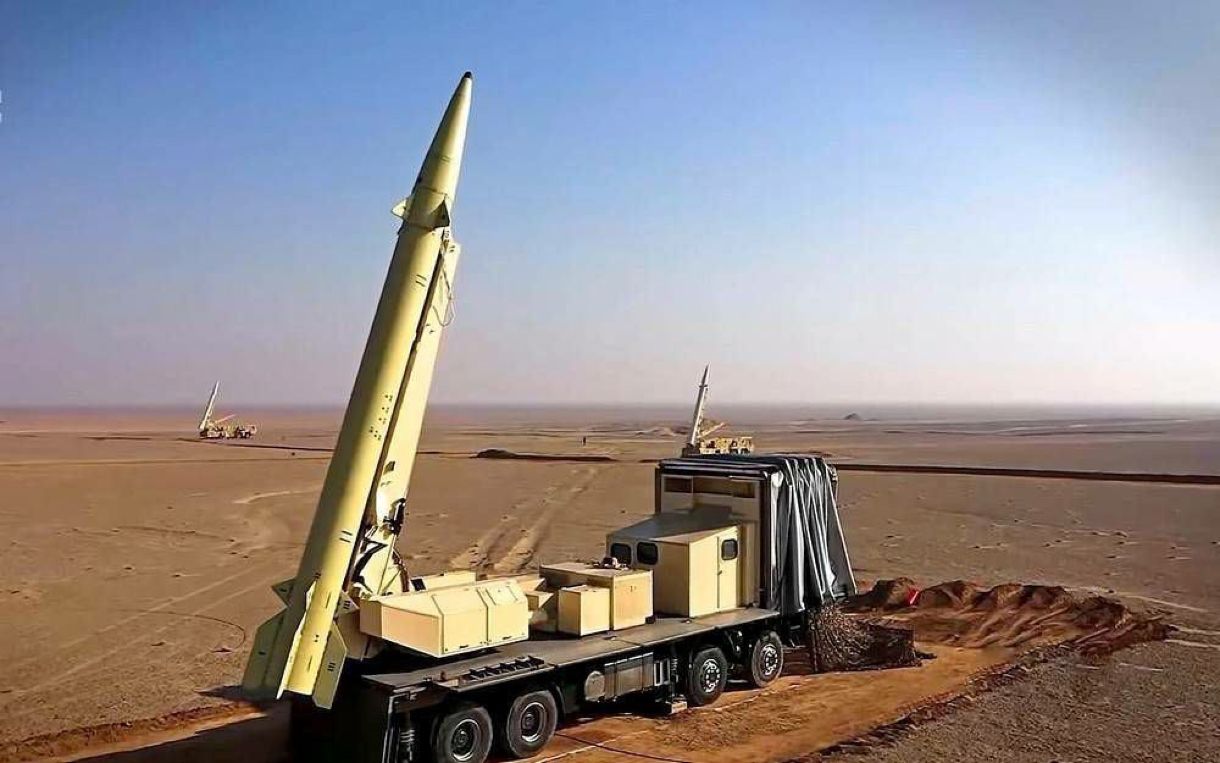In what could deeply unsettle and threaten the United States and its allies in the Middle East, Iran has demonstrated the capability to attack a naval base by deploying a loitering munition from a warship.
As part of its high-power military drills “Zolfaghar-1401,” the Iranian military launched an explosive-laden loitering munition (suicide drone) from Hengam class landing ship IRIS Lavan.
The loitering munition hit a simulated naval base target not identified by the Iranian military. The video of the drill that appeared on social media took the internet by storm.
According to military watchers and analysts, the drone appeared to be the Ababil-2 loitering munition. The Ababil class of drones can be launched using a rocket launch system, allowing it to be launched from the ship’s deck.
This system consists of a detonator, a trolly, rockets, and a three-point attachment mechanism. It is transportable and simple to assemble and remove.
After the video of the simulated attack was released and publicized, the Israeli media reported that the attack was stimulated on an Israeli Naval base.
Citing unnamed Open Source Intelligence Analysts, the Times of Israel report stated the mock base was created with a similar architectural layout to the Eilat Naval Base in the Red Sea coast city of the same name.
Interesting footage of an Iranian loitering munition (looks like an Ababil-2) launched from Hengam class landing ship IRIS Lavan and hitting a simulated naval base target during Iranian Army "Zolfaghar-1401" exercise today. pic.twitter.com/qB87DW7lQe
— Mehdi H. (@mhmiranusa) December 31, 2022
According to the report, a mock version of an Israeli Navy Sa’ar 6-class corvette was also present next to the stimulated target.
This is intriguing as the Israeli Navy successfully tested a ship-mounted version of its advanced Iron Dome air defense system on the vessel earlier this year. At the time, threats likely to face the Navy were simulated.
Even though it is not unusual for Iran to stimulate an attack on mock Israeli targets, an attack on a naval base in the Red Sea could be alarming for the Jewish country.
Iran and Israel have been accused in recent years of engaging in a naval “shadow war,” according to observers, in which vessels associated with each country have been attacked in a series of tit-for-tat encounters in the waters of the Persian Gulf and the Gulf of Oman.
However, the Iranian capability to quickly launch a loitering munition or a swarm of these expendable UAVs from a ship deck could pose a significant risk to Iran’s adversaries in the Middle Eastern region, including Israel and the Gulf Arab countries as well as the US military facilities.
Even though all these countries are armed to the teeth with modern air defense systems that could shoot down incoming drones, the cost differential would prove to be a headache, as demonstrated in the Ukraine war. The cheap Iranian Shahed-136 kamikaze drones deployed by Russia are shot down by the Ukrainian military using expensive surface-to-air missiles fired by Western missile defenses.

Zolfaghar Drills & Iran’s Growing Drone Capability
The massive war games kicked off on December 29 with the theme of “self-confidence, power, and sustainable security” at a time when tensions continue to grow between Iran and its regional rivals and its fiercest adversary in the west, the United States.
As part of the military drills, three indigenously developed combat drones- Arash, Bavar, and Ababil- were employed to strike mock targets along the coastline on December 31. In addition, surveillance and combat drones, such as the Mohajer-6, were used to survey mock-up war zones, gather information, and send topographical photographs to the joint control command center.
Combat drones have found widespread application and utility in modern warfare, and Iranian suicide drones, for one, have proved their prowess in the Ukrainian war. However, this is not the first time Iran has shown off its capability to launch drones from the sea.
In July this year, photos and video of various UAV types being launched from the Hengam-class landing ship Lavan (514), the support ship Delvar (471), and a Kilo-class submarine known as Tariq were published by the Iranian media.

Most were launched from rails using rocket boosters, including what seemed to be one-way attack-capable Ababil-2 and Arash UAVs. At the time, The Islamic Republic of Iran Broadcasting (IRIB) news coverage of the incident featured shots of UAVs striking both a floating and a land target.
The drills also coincide with growing alienation between Iran and the United States, with US officials warning of “alternatives” if the protracted nuclear deal talks in Vienna fail. Additional sanctions have also been slapped on Iran for providing military aid to Russia through kamikaze drones, with the possibility of ballistic missiles to follow in the future.
The United States has been alive to the challenges posed by Iranian drones in the region. As previously reported by EurAsian Times, the Joe Biden administration is working on a Middle Eastern Air Defense (MEAD) alliance to erect a blanket air defense against hostile (mostly Iranian) combat drones that regularly attempt attacks at military and civilian facilities in the Gulf Arab countries and Israel.
The US Central Command is developing counter-drone technologies to be positioned in the Middle East, owing to the proliferation of drones in the region. A distinctive counter-drone software capability is already under development.
The stakes, therefore, are high and the temperatures have gone soaring with the latest Iran military exercises.
- Contact the author at sakshi.tiwari9555 (at) gmail.com
- Follow EurAsian Times on Google News




